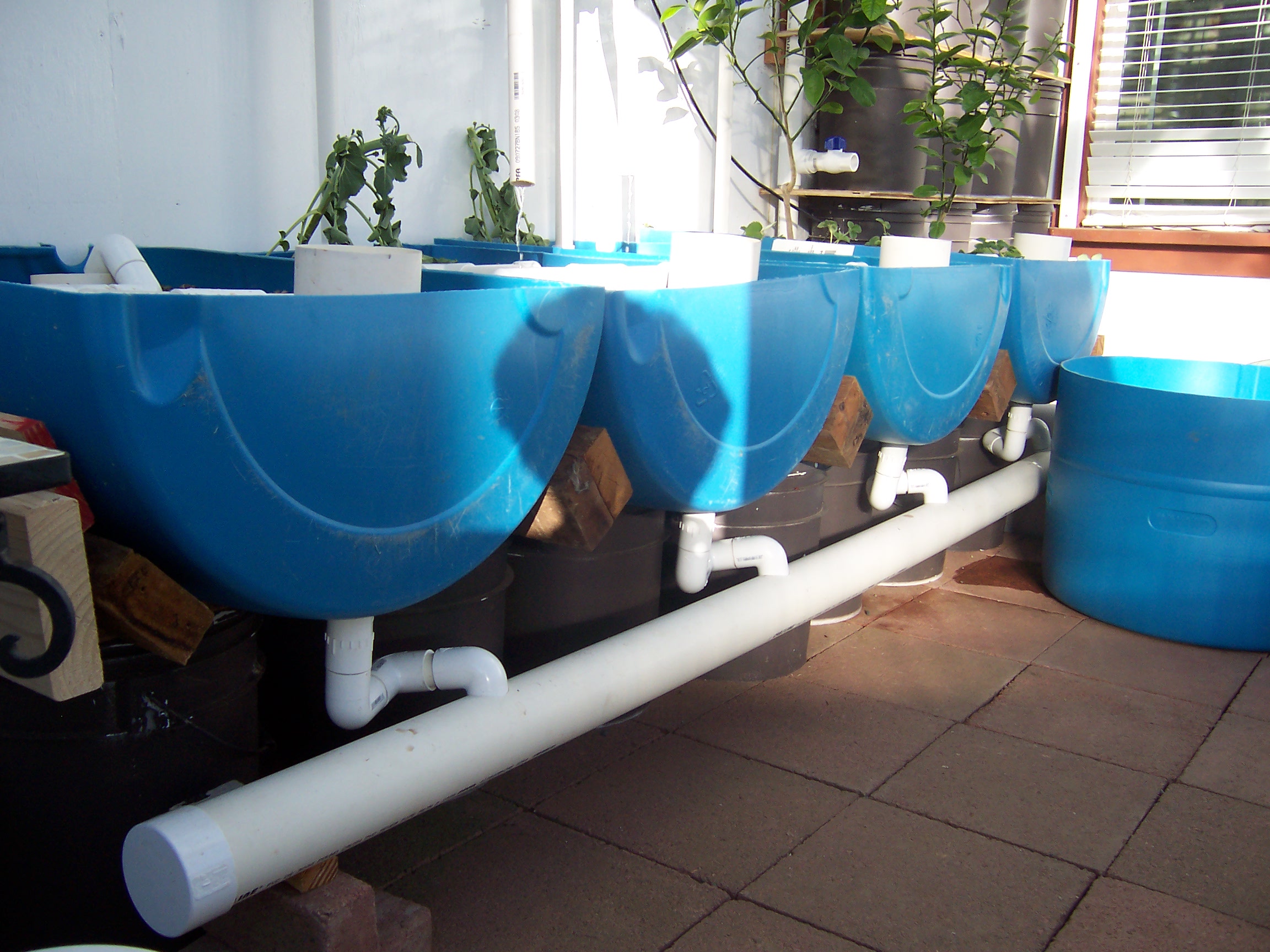Plumbing Decisions
Plumbing an aquaponics system is based on a large number of factors and very few systems have identical plumbing. I will describe what we did and how we came to the decisions we did. Over time, if we find we need to make adjustments we will include those as well.
We chose to use PVC pipe and connections because they should be long lasting, are relatively easy to work with and are the least likely of the options we could find to leak contaminants into the system. Initially, we used PVC cement on very few of the joints and opted for aquarium silicone sealant for connecting. The idea was to be able to easily adjust connections or make changes later on. Unfortunately, the aquarium sealant did not provide a secure seal and we had substantial leaking. By the time we were finished, we went back and glued many the of connections in the large supply line with pvc cement. The main exceptions were:
- The pipes that deliver water to the grow beds need to be cleaned periodically as roots will grow into the holes in the pipes.
- We also left part of the connections between the pump and where it comes out of the tank with aquarium silicone sealant. The pump will also need to be cleaned periodically so access is critical.
We used 1 1/2" pipe for the delivery pipe. This pipe actually runs from the pump, which is in the fish tank, up and around the greenhouse and returns back to the fish tank. We included a valve at the beginning and end of this line to allow for adjusting of water volume and pressure in the system. The amount of water that is returned depends on the pump used.
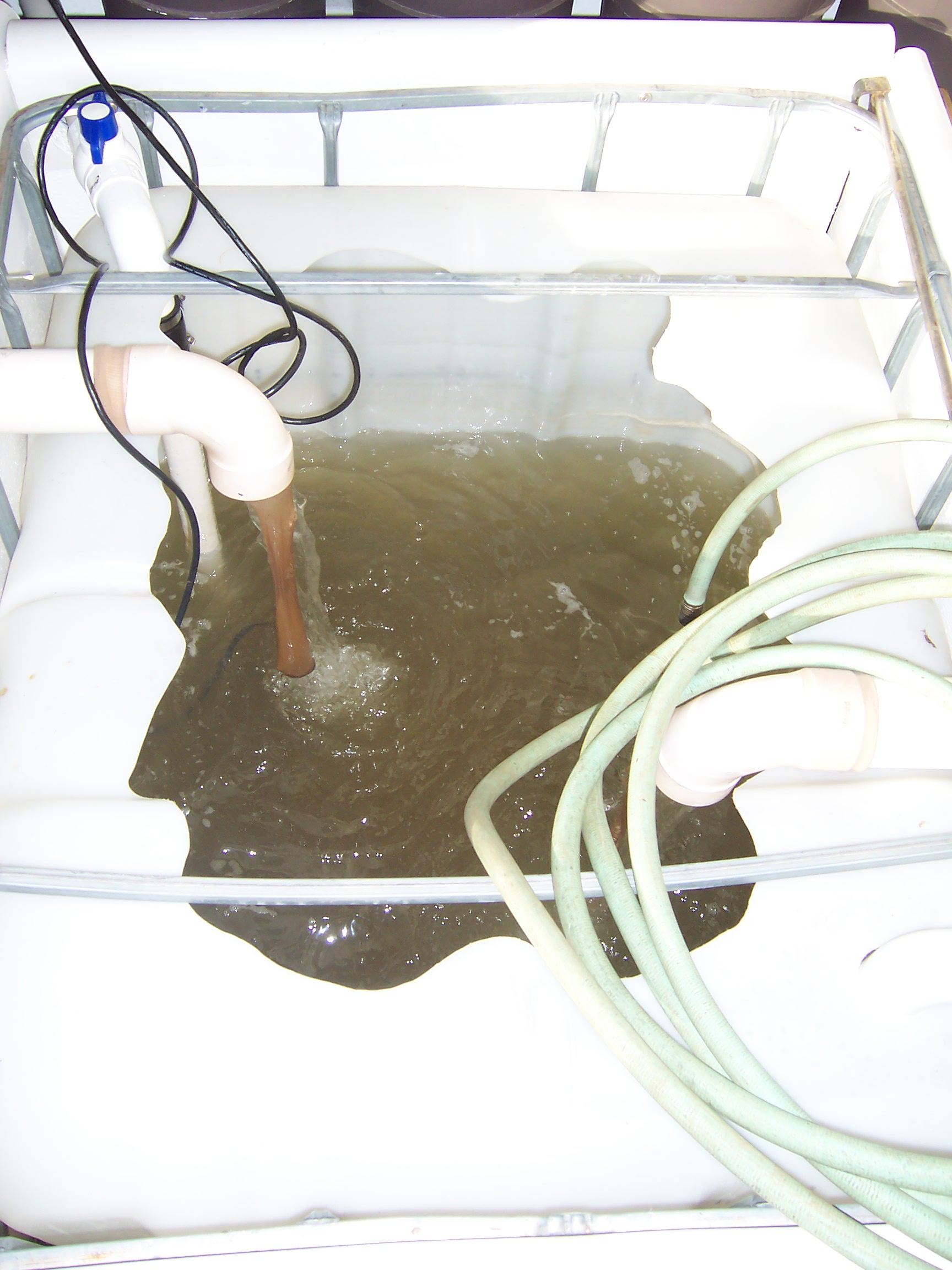


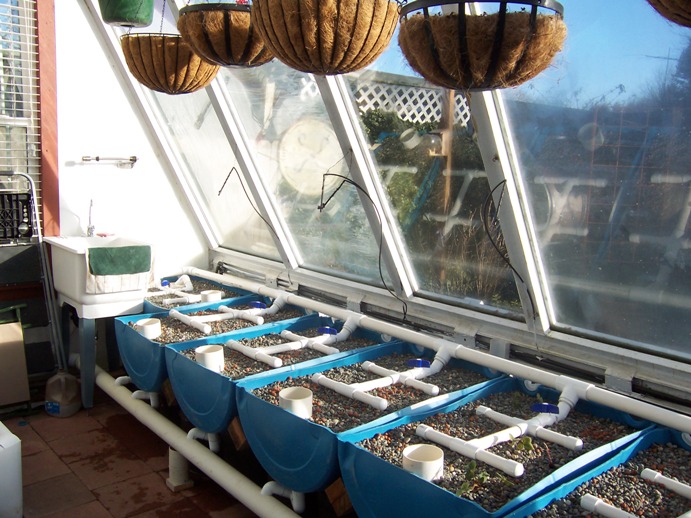
Pump for the Aquaponics System
We started out with a 3900 gph pond pump I had purchased several years ago for a pond that was never finished. The estimated total volume of our system is around 350 gallons and the goal is to turn over around 5-600 gallons each hour. The 3900 gph pump was simply too much for the system. We then tried a 950 gph pump that should have delivered around 600 gph based on the rise involved. Unfortunately, it wasn't strong enough. We now have a 2400 ghp pump on the way that should be strong enough to deliver a good volume without the crashing water sound we currently have in the greenhouse from the 3900 ghp pump.
Controlling Water Flow
We have a connection off of the main delivery pipe for each grow-bed with a valve on the connecting pipe. These are all 1" pipes and connectors. The valve will allow the bed to be shut off for cleaning and water limited as needed for specific crops. We chose to create a grid on the bed that breaks each bed into approximately 1 square foot sections. In our research, we've seen a number of ways folks deliver water to the grow beds. Our goal was to accomplish even delivery and avoid buildup of fish wastes in any one area of the bed. The grids have 1/4" holes drilled every 1" and a cap at the end of each leg. If I had it to do over again, I would space them every 2" as I believe that would be sufficient.
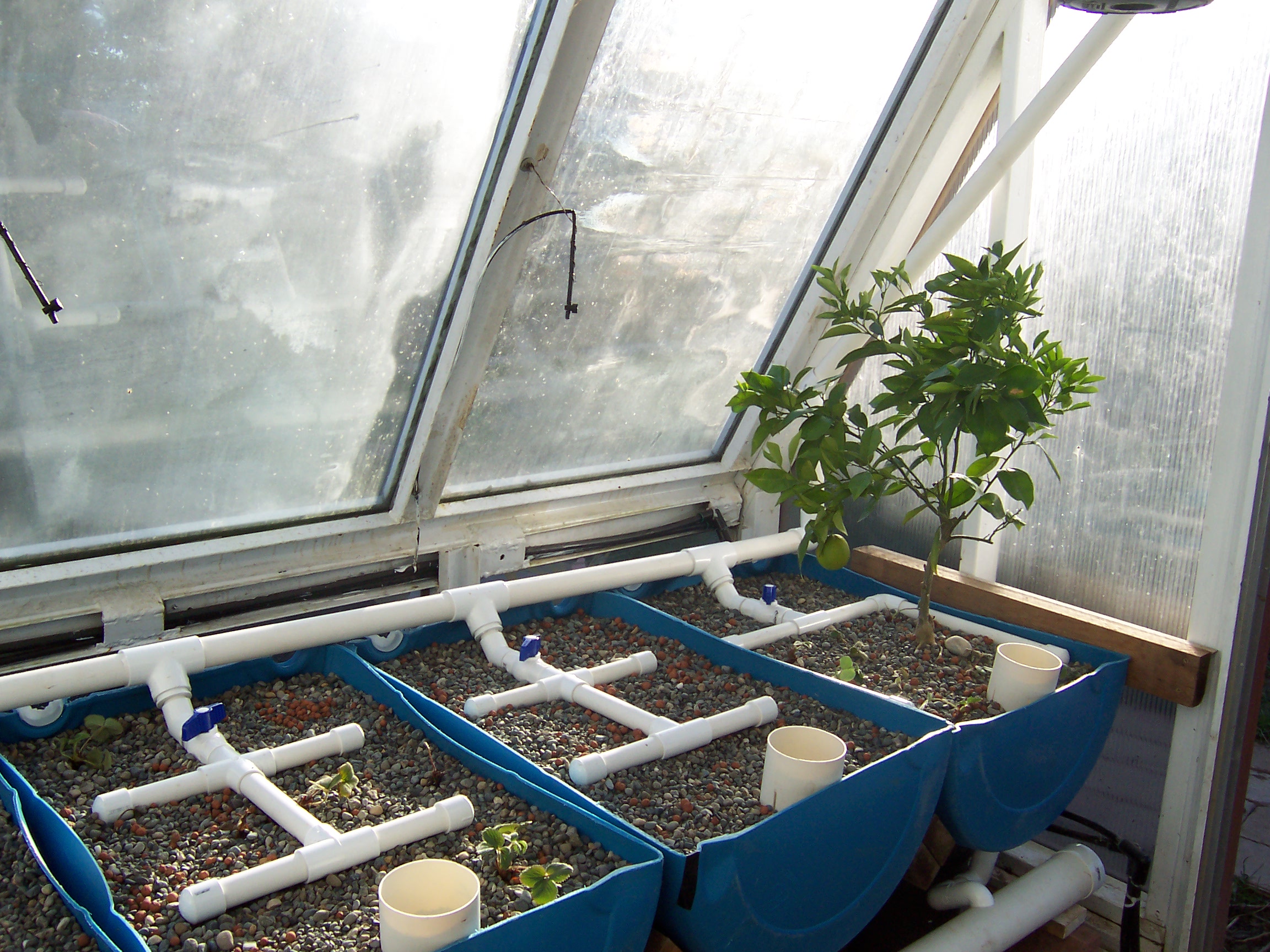
Bell siphons
We chose to use bell siphons to drain the beds as we wanted a flood and drain system. Each bed slowly fills with water and when sufficient pressure is achieved on top of the siphon, the siphon action kicks in and the bed drains automatically. I understand these work very well over time though they are tricky to get working initially. There is great information in these Backyard Aquaponics threads regarding bell siphons and how to set them up:
Ell's Basic System is about the development of using bell siphons in aquaponic systems and Siphons for Aquaponics give some specific information regarding bell siphons.
For our bell siphons, we used a 1" diameter standpipe, 6 1/8"long, 2" diameter bell siphon with cap, 7 1/16" (pipe length) long and 4" diameter outer pipes 12" long. The overall bell height is approximately an inch shorter than the water level desired in each bed. We cut pipe to cover two siphons, drilled 3 - 1 5/8" holes at the center of the pipe equally distanced around the pipe and then cut the pipes in half. These serve as our crenellations to allow water to flow into the siphon.
Update: The crenellations (or cutouts at the bottom of the bell siphon) were initially circular as described above. In the end, we had to redo the siphons and make square/rectangular crenellations for the effective functioning of the siphons.
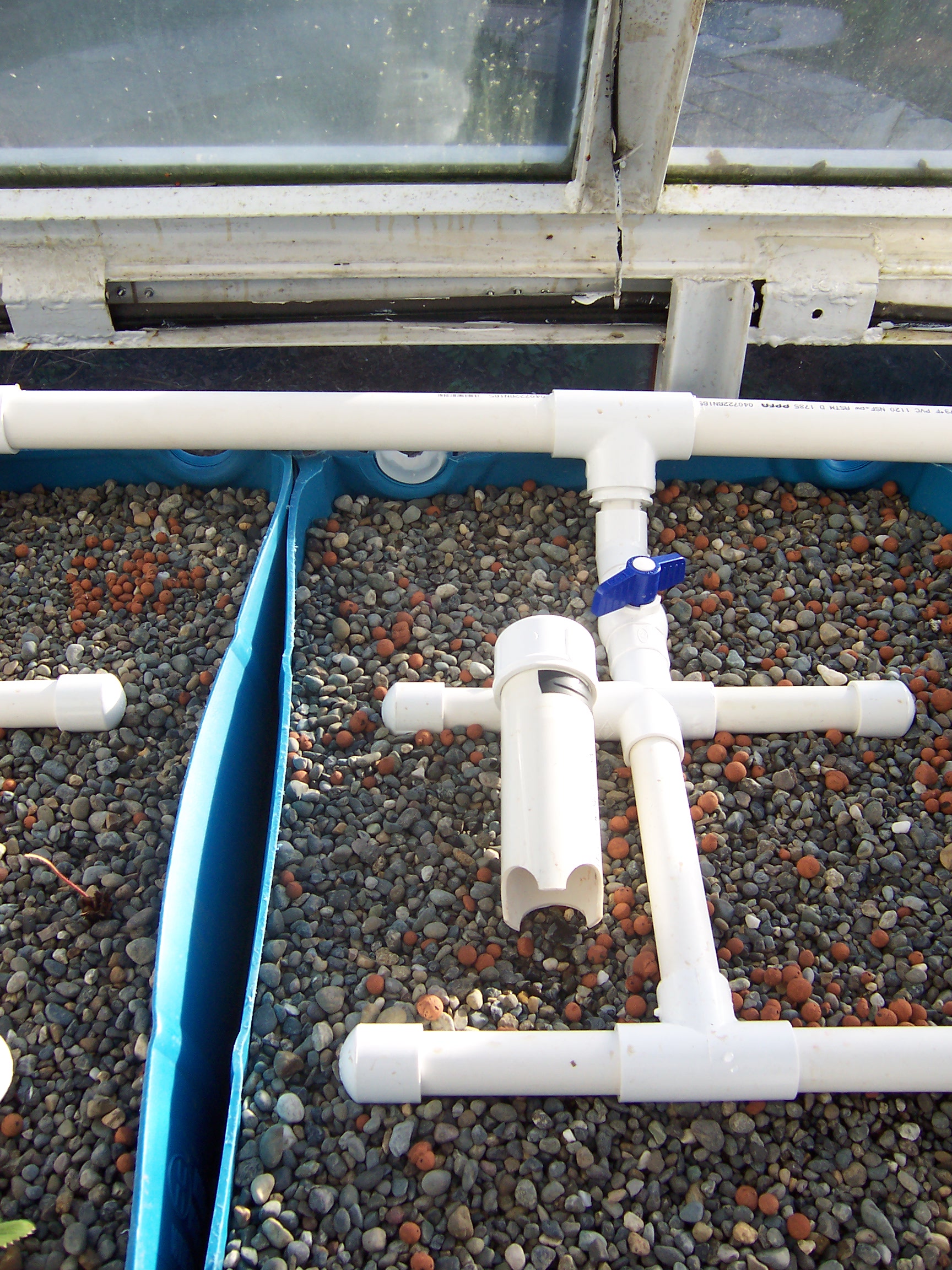
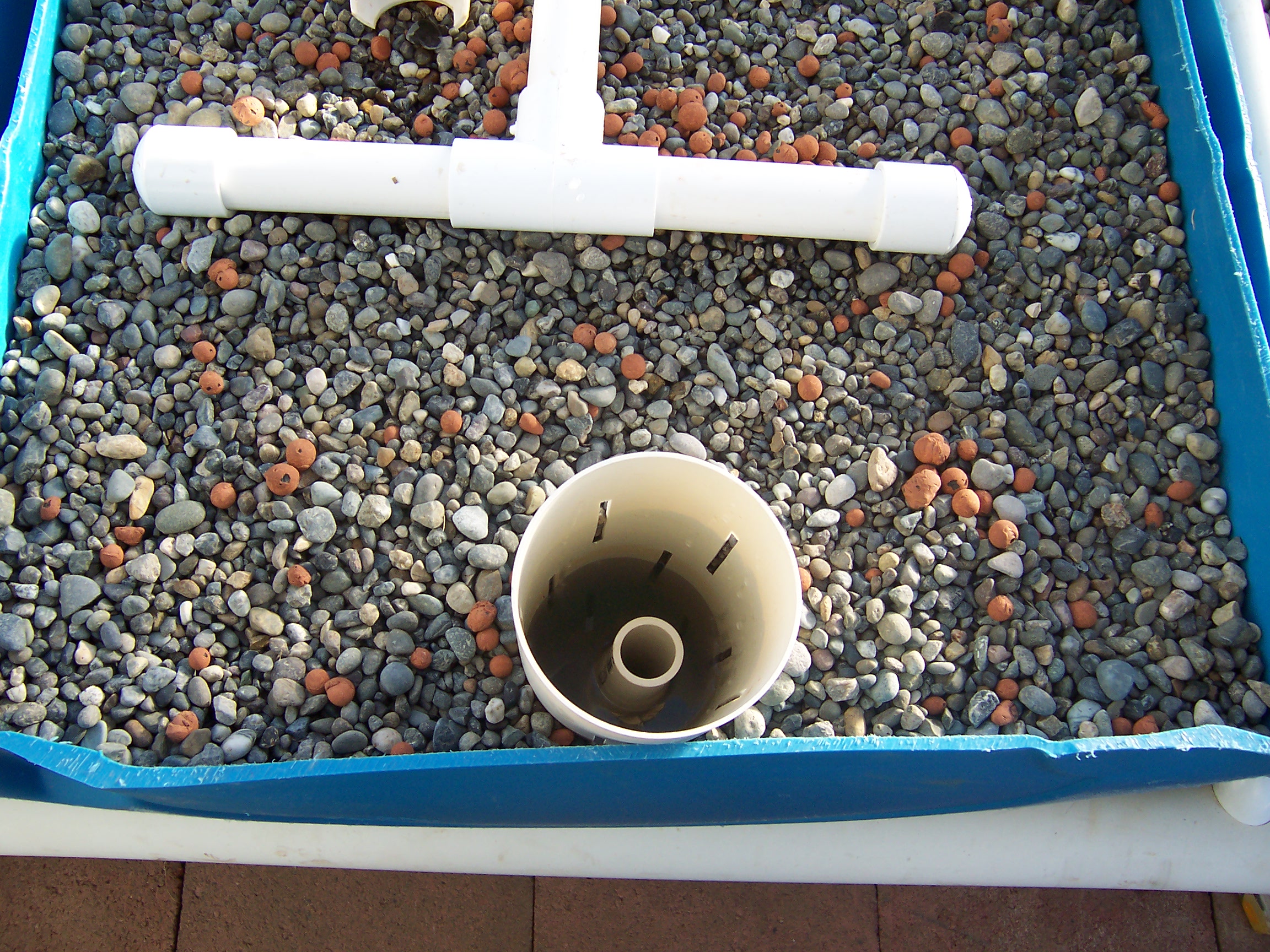
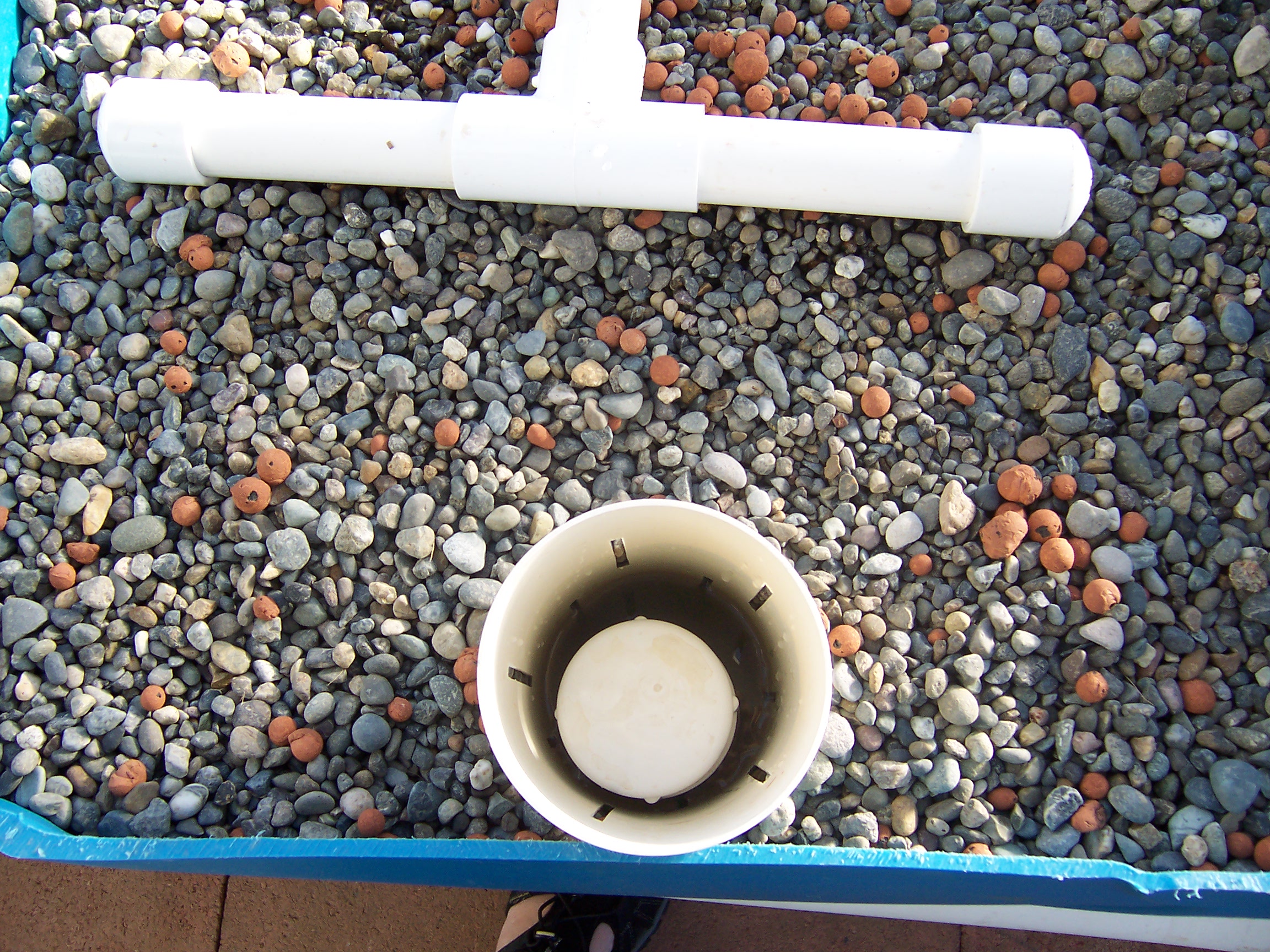
The outer pipes have slits cut in them with a double width blade that were cut on the table saw. We chose two rows of 5 slits leaving 2" at the top and about 3/4" on the bottom. This is sufficient to allow a good water flow into the bell siphon and still hold the gravel and hydroton away from the siphon.
Each bell siphon has an adjustable trap under the bed that drains into a 3" drain pipe. We drilled 1 5/8" holes in the top of the drainpipe so the fittings would fit snuggly. It is important to have a slight upwards angle in the trap for the bell siphon to work properly. The higher the rise, the more water is required on the top of the bell to create pressure to start the siphon action. A conventional P trap has a higher rise than is necessary for this application.
Drain Pipe
We have four beds on one side draining into one drain pipe and seven beds on the other side of the greenhouse draining into another drain pipe. Based on this general size of system, I'd recommend a 4" drain pipe. We do have some spillage periodically in both of the pipes. Once the new pump is installed, we will try to fine tune the system some, but I'm guessing the larger run will continue to leak and may need to be replaced.
